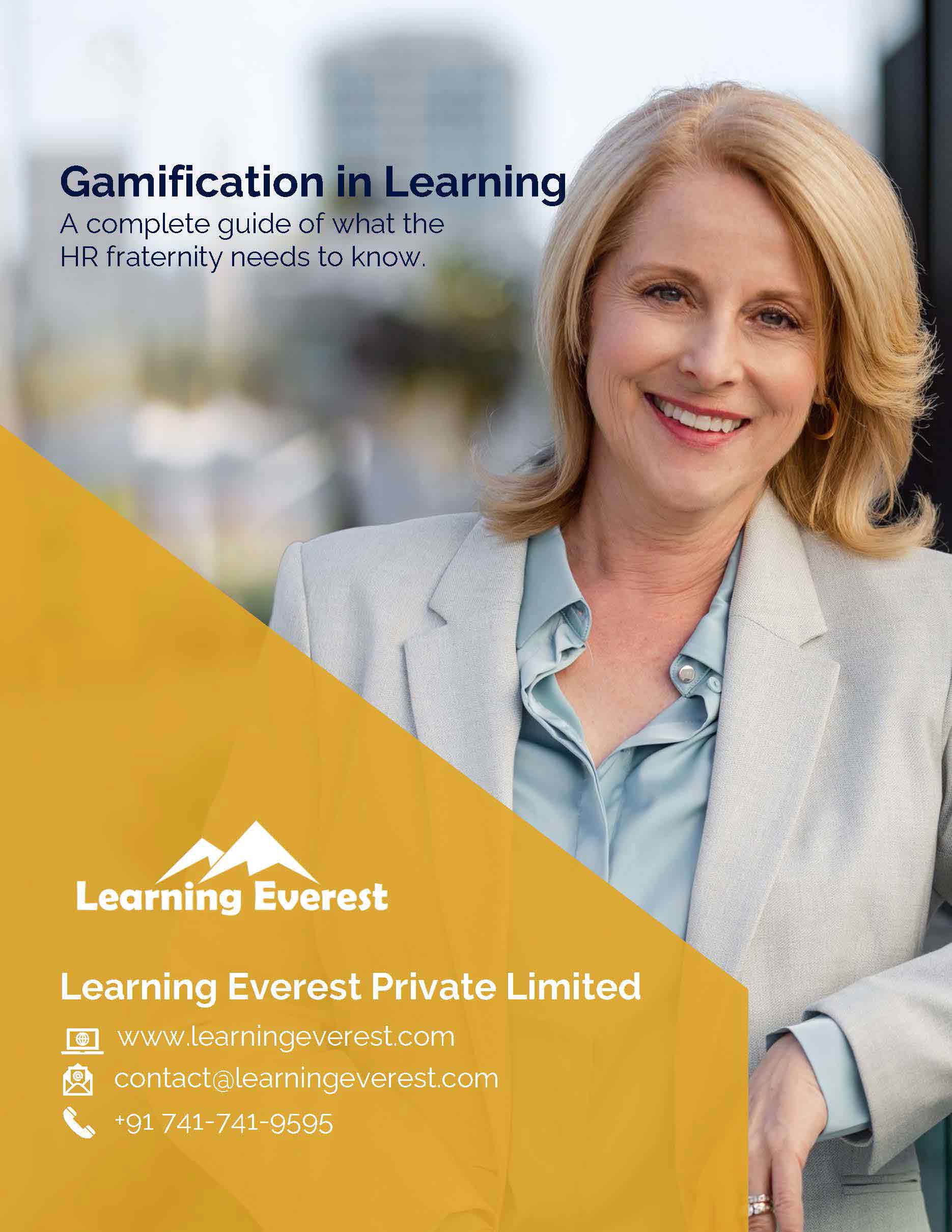Gamification in Learning – A complete guide of what the HR fraternity needs to know – eBook
Table of Contents
- Introduction
- What is gamification in learning?
- Why use gamification in learning?
- How to use gamification in learning?
- Different types of gamifications
- Challenges of using gamification in learning
- Gamification Use Cases in Learning
- Best practices for gamification in learning
- Future of gamification in learning
- Conclusion
Number of Pages in the eBook: 45
30 mins read

Interested in the eBook?
Just provide the details, and we’ll email you a copy of the eBook.
INTRODUCTION TO THE EBOOK
With the evolution of digitization of learning, the learning and development landscape is evolving rapidly. Introduction of new technologies and advancements have led to traditional training methods become redundant and less effective. One of the most popular methods to engage employees in the learning process is gamification. Gamification has been widely used in various industries to improve user engagement, and its benefits in learning and development are also becoming more apparent.
Gamification in learning is not just about creating games; it is a strategic approach to learning that leverages game mechanics to drive learner engagement, motivation, and knowledge retention. The use of gamification in learning has proven to be an effective approach for achieving learning objectives while keeping learners engaged and motivated.
This e-book aims to provide a complete guide on gamification in learning for the HR fraternity. The e-book covers various aspects of gamification in learning, including what gamification is, how it works, the benefits of gamification in learning, and best practices for incorporating gamification in learning.
The e-book begins by introducing the concept of gamification and its applications in learning. It then delves into the various benefits of gamification in learning, such as increased engagement, motivation, and knowledge retention. The e-book also discusses the different game mechanics that can be used in gamification, such as points, badges, and leaderboards, and how they can be applied to learning.
Next, the e-book explores the different types of gamifications in learning, such as simulations, serious games, and gamified assessments, and provides examples of each. It also discusses how gamification can be used to create a personalized learning experience for each learner.
The e-book then focuses on the best practices for incorporating gamification in learning. It covers topics such as identifying learning objectives, defining game mechanics, creating a feedback loop, and measuring the success of gamification in learning. The eBook provides practical examples of each best practice, along with tips and tricks for successful implementation.
Finally, the e-book concludes with a discussion of the future of gamification in learning. It explores emerging trends and technologies in gamification and their potential applications in learning and development.
This e-book on, “Gamification in Learning – A complete guide of what the HR fraternity needs to know.,” is a comprehensive guide on gamification in learning, providing HR professionals with the knowledge and tools necessary to incorporate gamification into their learning and development programs. By leveraging gamification, organizations can create engaging and effective learning experiences that drive employee performance and organizational success.
Interested in the eBook?
Just provide the details, and we’ll email you a copy of the eBook.





